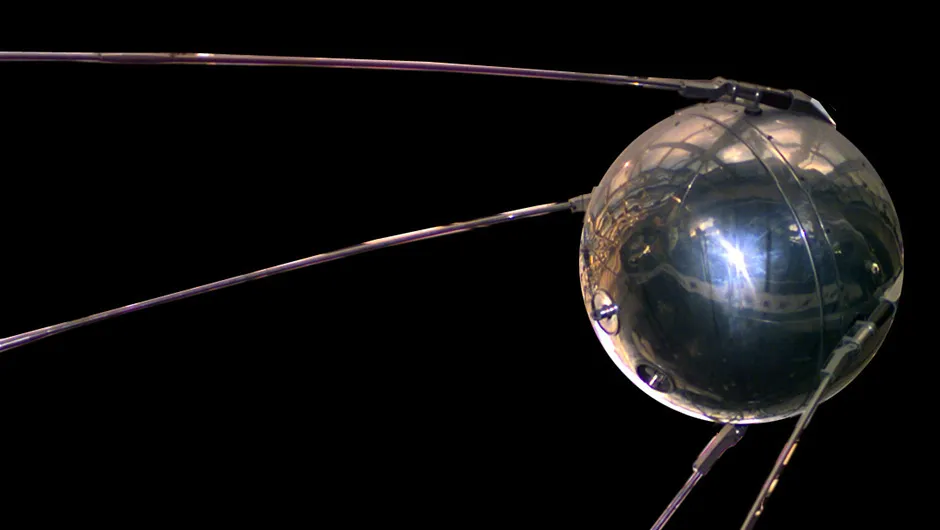This year marks the 60th anniversary of the world’s first artificial satellite, launched on 4 October 1957.
Russia’s Sputnik 1 triggered an epic new adventure, and many of the historic events in space since that day have become familiar to us all: the first landing on the Moon, the awe-inspiring images from the Hubble Space Telescope and the tragic destruction of NASA’s Space Shuttle Challenger spring to mind.
Other significant moments are perhaps a little less obvious…
60.4 October 1957
Britain steals a sneaky space ‘first’.
The new radio telescope at Jodrell Bank near Macclesfield, Cheshire, tracks the flight of Russia’s Luna 3 probe and intercepts the first images of the far side of the Moon.
59.8 July 1980
India becomes the seventh nation after Russia, America, France, Japan, China and the UK to launch a satellite with its own rocket.
58. 25 January 1994
A tiny, low-cost probe called Clementine lifts off on its mission to survey the rugged lunar landscape for mineral content.
With this ‘small step’ our post-Apollo return to the Moon quietly begins.
57. 13 July 2006
Hotel entrepreneur Robert Bigelow launches Genesis 1, an inflatable space station, for a successful uncrewed test.
Bigelow is just one of many private investors planning to turn space into a commercial venture.
56. January 1987
Alan Bond at British Aerospace perfects the design for a Horizontal Take-Off and Landing spaceplane called HOTOL.
It remains one of the most admired concepts in the global space industry, but the failure to give it the green light leaves Britain with little prospect of having its own launch vehicle.
55. 29 October 1998
Mercury Seven astronaut John Glenn returns to orbit at the age of 77, aboard the shuttle Discovery.
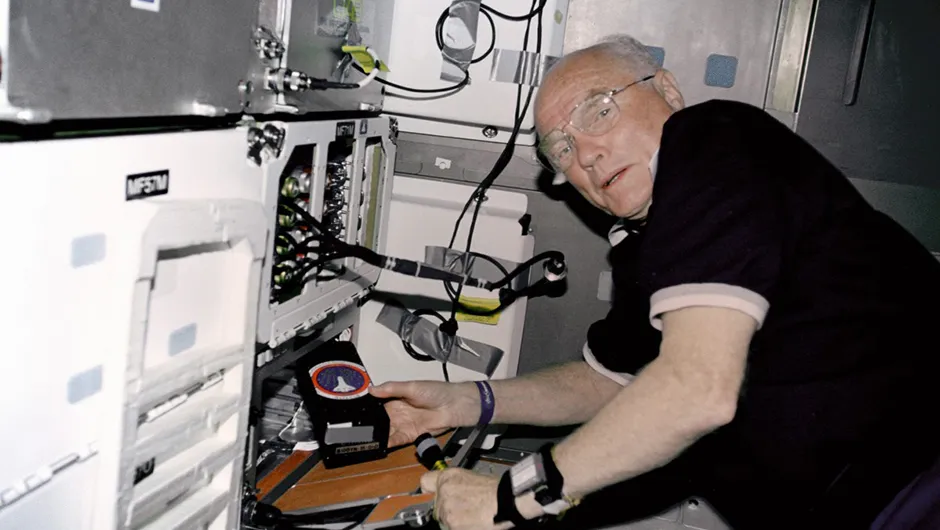
54. 2 July 1985
ESA launches the Giotto probe to rendezvous with Halley’s Comet.
Japan’s Suisei craft joins the chase in August, while Russia’s twin Vega probes are already in transit.
Only two other comets have ever been studied by spacecraft: Giacobini-Zinner in 1985, and Grigg-Skjellerup in 1992.
53. 25 September 1979
Russia’s Cosmos 1129 satellite carries white rats into orbit in the hope that some of them will mate and breed.
The results are disappointing because the rats just aren’t in the mood.
52. 14 February 2000
The Near Earth Asteroid Rendezvous probe, NEAR, settles into orbit around asteroid Eros, ahead of a successful touchdown.
The core of Eros is as dense as Earth’s crustal rock, while the surface, surprisingly, is covered in dust and loose rubble.
51.15 October 2003
China’s gradual long march into space continues.
It sends taikonaut Yang Liwei into orbit aboard a Shenzhou capsule.
After a successful one-day mission Liwei returns to Earth.
50. 11 July 2017
NASA's Juno spacecraft makes a close flyby of Jupiter's Great Red Spot, giving scientists their closest ever glimpse at the planet's raging storm.
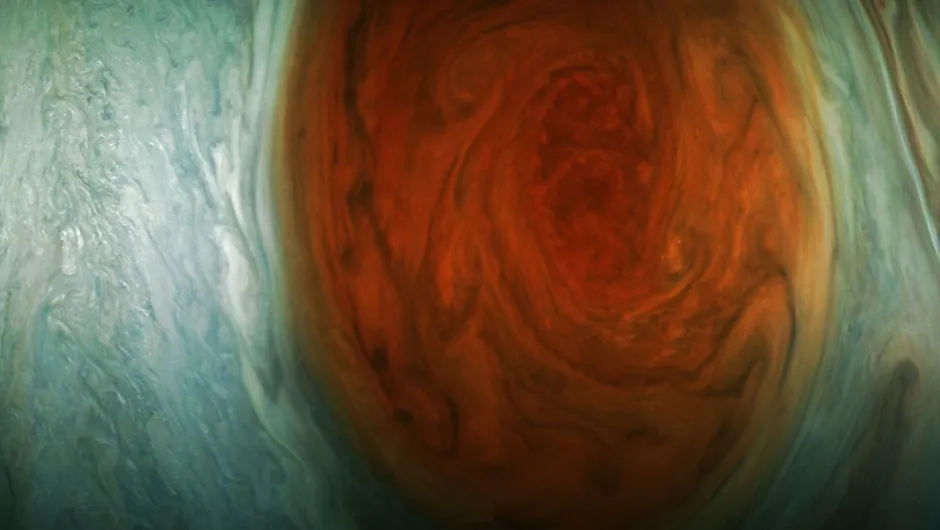
49. 28 April 2001
American financier Dennis Tito flies to the International Space Station aboard a Russian Soyuz, hired for $20 million of his own money.
Tito conducts genuine science experiments and dislikes being called a ‘space tourist.’
48. 17 July 1975
The last Apollo mission docks with a Soyuz capsule.
The Space Race between Russia and America comes to an end, and a new era of co-operation is hinted at.
47. 29 October 1991
The Galileo space probe, bound for Jupiter, approaches to within 2,000km of a drifting chunk of rock called Gaspra. This is our first close-up glimpse of an asteroid.
46. 20 January 1978
Russia fires off the first of its uncrewed robot-controlled Progress supply ferries. It docks with the Salyut 6 space station, and its crew take fresh food, water, thruster propellants and air on board.
45. 25 August 1989
On its epic journey across the Solar System, the tiny Voyager 2 probe takes more spectacular photographs.
It skims just 3,000km above the cloud tops of Neptune and beams back images of Triton, a strange multi-coloured moon with glaciers of frozen methane and ice ‘volcanoes’.
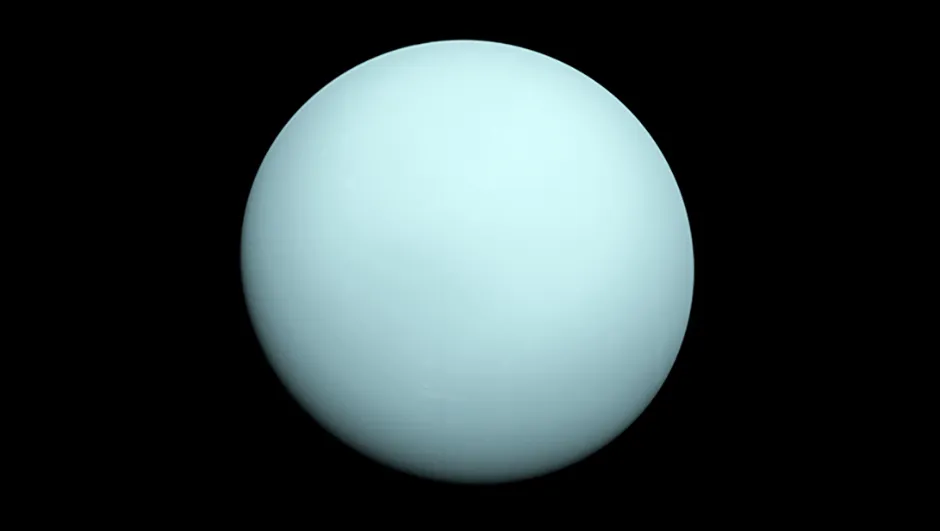
44. 29 June 1995
NASA’s Shuttle Atlantis docks with the Russian Mir space station and celebrates the 100th crewed American mission to space.
43.10 October 1964
In a taste of the global telecoms revolution soon to come, the opening ceremony of the Olympic Games in Tokyo is broadcast internationally via NASA’s Syncom satellite.
42. 14 January 2005
After a seven-year journey across the Solar System on board NASA’s Cassini spacecraft, ESA’s Huygens probe successfully lands on Titan, Saturn’s largest moon, in one of the most challenging space missions ever attempted.
41. 28 May 2002
NASA’s Mars Odyssey delivers welcome news for future Mars colonists.
There are vast quantities of water on Mars, in the form of ice. Subsequent data suggests the possibility of liquid water carving the flanks of gullies and craters.
40.1 May 1996
President Clinton authorises a change to the Global Positioning Satellite (GPS) laws. From now on, civilians as well as the military can benefit from accurate signals.
Modern in-car navigators and mobile phone location finders are the latest products of the Space Age.
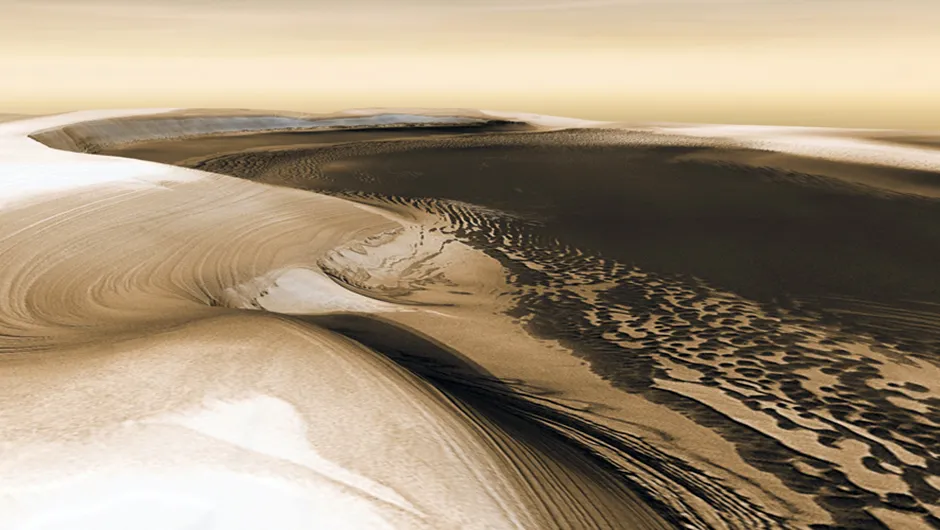
39. 26 September 1983
Cosmonauts Gennady Strekalov and Vladimir Titov are pulled clear of a malfunctioning Soyuz booster.
The automatic systems fail, but the emergency rockets are activated manually by an alert ground controller.
Just a few seconds later, the booster explodes.
38. 14 May 1973
NASA launches Skylab, a large space station built from the converted upper stage of a Saturn V rocket.
Unfortunately the Saturn assembly line is already shut down by now, and the mighty booster never flies again.
37. 1 January 1970
China launches its first ‘Long March’ rocket from the Jiuquan launch complex in the Gobi Desert of Mongolia near Shanghai, marking the start of the Space Age as a truly international endeavour.
36. 1 March 1982
Russia’s Venera 13 probe lands on Venus, perhaps the most hellish and inappropriately named planet in the Solar System.
It transmits colour pictures of the surface for two hours, before the 800˚F heat and crushing atmospheric pressure (90 times that of Earth) destroy the probe.
35. 12 April 1981
NASA’s Columbia blasts into orbit, heralding the age of the Space Shuttle.
A few ceramic insulation tiles come loose but the mission isn’t endangered.
No one suspects the terrible dramas that lie ahead.
34. 2 March 1972
The first spacecraft destined to escape from the Solar System is launched, as Pioneer 10 heads to Jupiter to make direct observations, and beyond.
A plaque on the side of the craft is designed for aliens to recover and analyse, perhaps many thousands of years in the future.
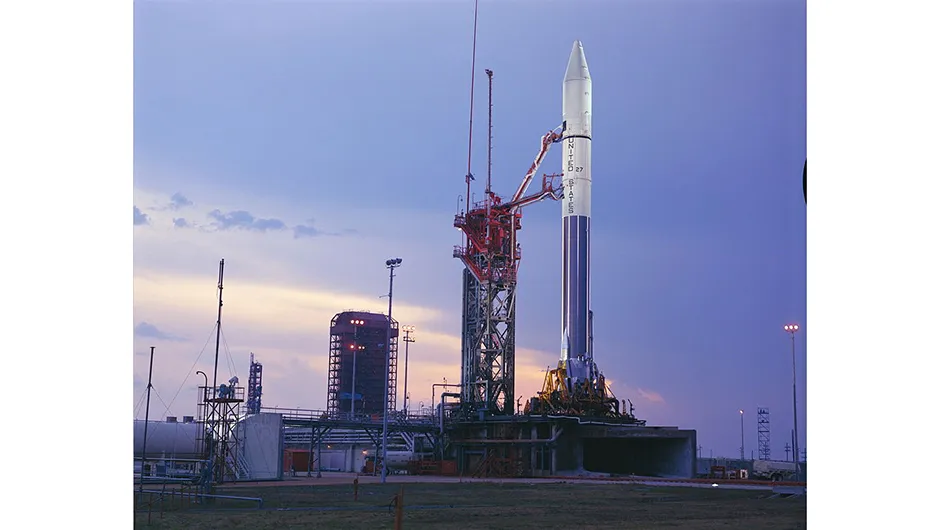
33. 17 July 1975
The Apollo-Soyuz mission sees a USSR Soyuz capsule dock with a US Apollo capsule in Earth orbit, making it the first US-Soviet joint space flight.
Considering the Cold War tensions between the two nations, the mission is heavily symbolic.
32. 8 September 2016
NASA’s OSIRIS-REx spacecraft launches on its mission to the near-Earth asteroid Bennu, from which it will collect a sample in 2018 and return it to Earth in 2023.
31. 16 March 1966
Astronaut Neil Armstrong rescues Gemini 8 from disaster as it spins wildly in space with a rocket thruster jammed in the ‘on’ position.
Armstrong’s coolness under pressure is noticed by NASA chiefs, and he is discreetly tipped for an important role in the Apollo lunar schedule that would later make him world famous.
30. 20 July 1976
The first of two Viking probes lands on Mars and finds life.
Or to be more precise, one of the three biology experiments picks up a strong positive signal while the other two deliver negative results.
Arguments over what the experiments really showed go on even today, although scientists are hopeful that primitive bugs will eventually be detected on Mars.
29. 30 May 1974
NASA launches the Applications Technology Satellite-6 (ATS-6).
After a year transmitting US communications, it shifts orbit and beams educational programmes to 5,000 remote villages in the Indian subcontinent.
28. 23 July 1999
The launch of the Chandra X-ray Observatory, enabling scientists to observe the cosmos beyond optical light and change our understanding of the Universe.
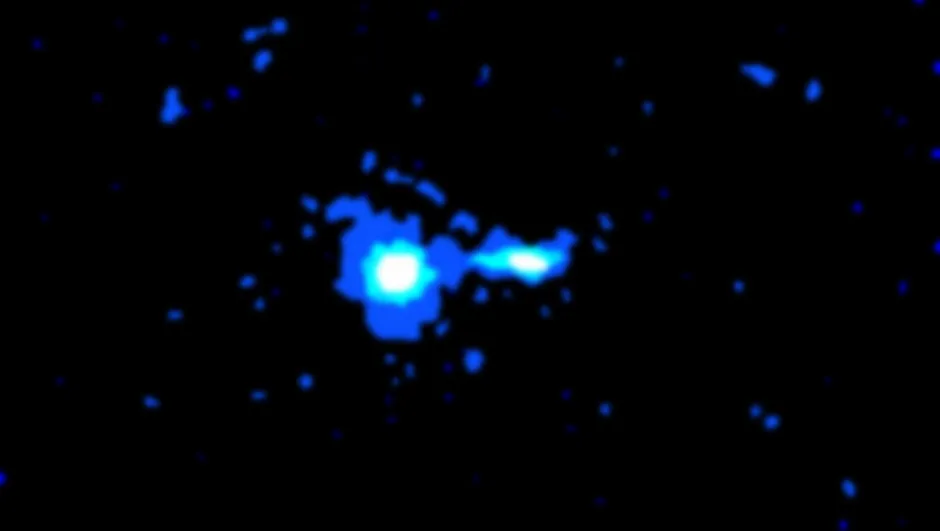
27. 3 May 2007
Wally Schirra, one of NASA’s pioneering Mercury astronauts, dies at the age of 84.
26. 12 November 2014
The Rosetta spacecraft's Philae lander becomes the first to land on a comet, giving scientists incredible insight into the workings of these icy bodies.
25. 24 October 1960
The explosion of an R-16 missile at Baikonur, Russia’s launch complex in Kazakhstan, kills at least 190 people, in the world’s worst (and for many years, most secret) rocket disaster.
The rocket explodes on the launch pad when its second-stage motors ignite too soon.
24. 23 November 2015
Blue Origin’s New Shepard reusable rocket becomes the first to reach outer space then perform a vertical soft landing back on Earth.
The potential for rockets to be reused, rather than disposed of, could have major implications for the future of spaceflight.
23. 16 January 2017
Gene Cernan, the last man to set foot on the Moon, dies aged 82.
22. 19 April 1971
Russia launches Salyut, the first space station.
The first crew to dock and go aboard, on 6 June, are Victor Patseyev, Georgi Dobrovolski and Vladislav Volkov.
Three weeks later they are killed during re-entry when all the air leaks out of their Soyuz capsule.
21. 2 December 1993
The acclaimed first Hubble repair mission, when astronauts fix the telescope’s faulty mirror, proves beyond doubt that humans and machines work best as a partnership.
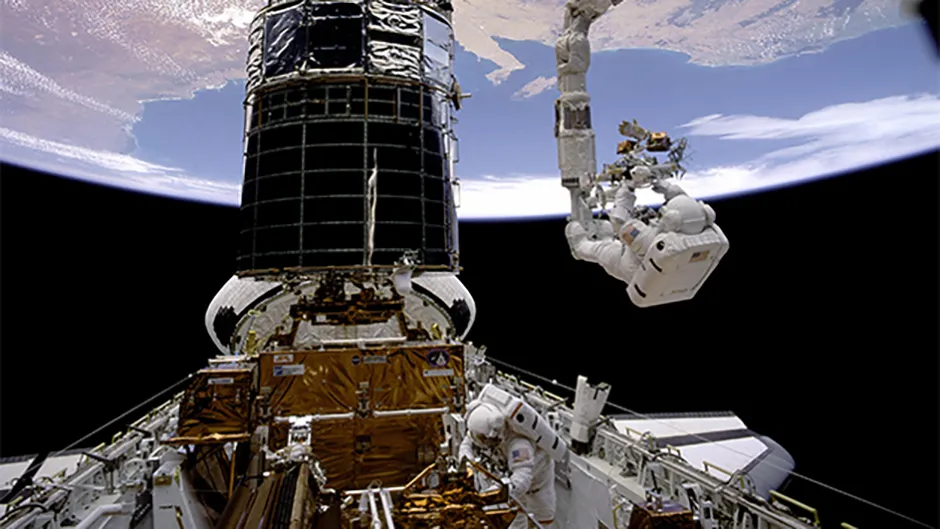
20. 18 March 1965
Alexei Leonov makes the first space walk from the two-seater craft Voskhod II.
This mission is followed a week later by NASA’s Gemini 3.
Then comes Gemini 4 in the first week of June, and Ed White’s debut space walk for the US.
19. 27 January 1967
Tragedy strikes the Space Race when a launch pad fire kills Apollo 1 astronauts Grissom, Chaffee and White.
Soviet cosmonaut Vladimir Komarov dies less than three months later as his Soyuz capsule crashes to Earth.
18. 12 March 2008
The Cassini spacecraft flies directly through a plume of water bursting through the surface of Saturn's icy moon Enceladus.
Instrument data showed that water and other material was being ejected at about 1,300 kilometres per hour.
17. 6 February 1962
John Houboult at NASA’s Langley Center sketches a Moon landing craft made from thin metal foils, designed to keep Apollo’s weight down.
Everyone says he’s crazy.
Then they decide he’s right, and the ‘lunar module’ is conceived.
16. 18 June 1984
Sally Ride becomes the first American woman in space, on board the shuttle Challenger.
Less than two years later she will join a board of inquiry investigating the loss of that same spacecraft when it blows up on launch.
15. 23 April 1992
NASA announces that the Cosmic Background Explorer probe (COBE) has mapped the faint microwave afterglow of the Big Bang, a truly epic discovery.
14. 31 January 1961
America’s first space capsule, Mercury, is launched for a test mission with a chimpanzee called Ham on board.
Ham returns safely to Earth, but minor problems with the short flight cause NASA to delay launching its first astronaut by 21 days.
Russia beats NASA to it, sending Yuri Gagarin into orbit, much to President Kennedy’s embarrassment.
13. 4 October 2004
Burt Rutan’s SpaceShipOne becomes the first privately built craft to reach the edge of space carrying a pilot. Later that same year, Richard Branson announces a plan to build a fleet of suborbital passenger craft.
12. 20 August 1977
One of the most epic space missions in history is launched.
Voyager 2 uses a rare alignment of the planets to create an immense, Solar System-spanning, ‘gravity assist’ trajectory.
It heads for rendezvous with Jupiter in 1979, Saturn in 1981, Uranus in 1986 and Neptune in 1989.
11. 14 July 2015
NASA's New Horizons spacecraft flies 12,500km above the surface of Pluto, making it the first spacecraft to explore the dwarf planet and completing the initial survey of the classical Solar System.
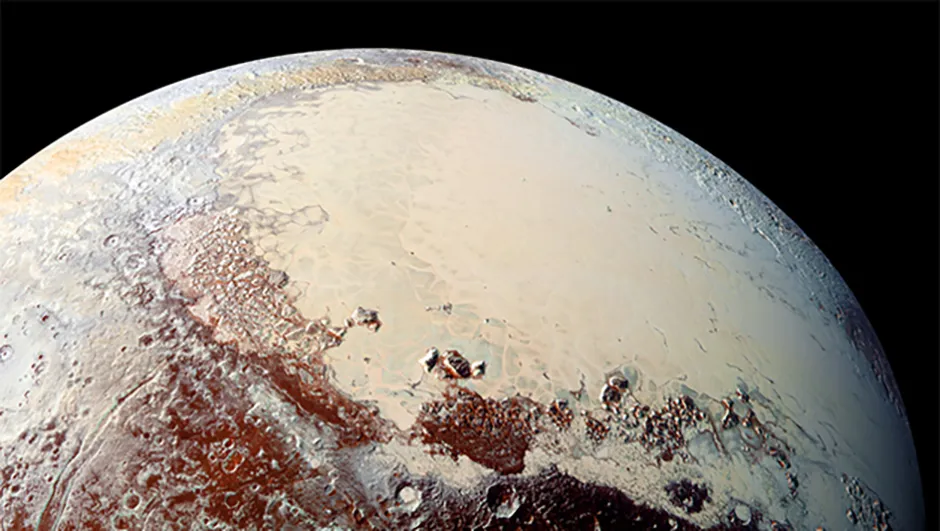
10. 16 June 1963
Russia’s Valentina Tereshkova becomes the first woman in space.
Yet NASA makes no similar move to fly a US woman into orbit, despite the availability of a team of female astronaut trainees known as the ‘Mercury 13’.
9. 4 July 1997
Public support for planetary exploration is boosted when a small, wheeled rover costing no more than a typical Hollywood adventure movie lands on Mars.
Pathfinder’s images and scientific data goes straight onto the internet, and NASA breaks the global record for website hits.
8. 31 January 1958
America’s first satellite, Explorer 1, makes one of the most important discoveries of the Space Age.
Physicist James van Allen’s instruments find belts of radiation surrounding the Earth. These are later named after him.
7. 25 August 2012
Having launched from Earth in 1977, the Voyager 1 spacecraft becomes the first manmade object to leave our Solar System, following an incredible mission that saw it beam back images of the outer planets and their moons.
6. 24 April 1990
Launched on this day aboard Space Shuttle Endeavour, the Hubble Space Telescope's first three years of operation were clouded by technical problems, but today it is renowned as one of the most impressive scientific projects in history.
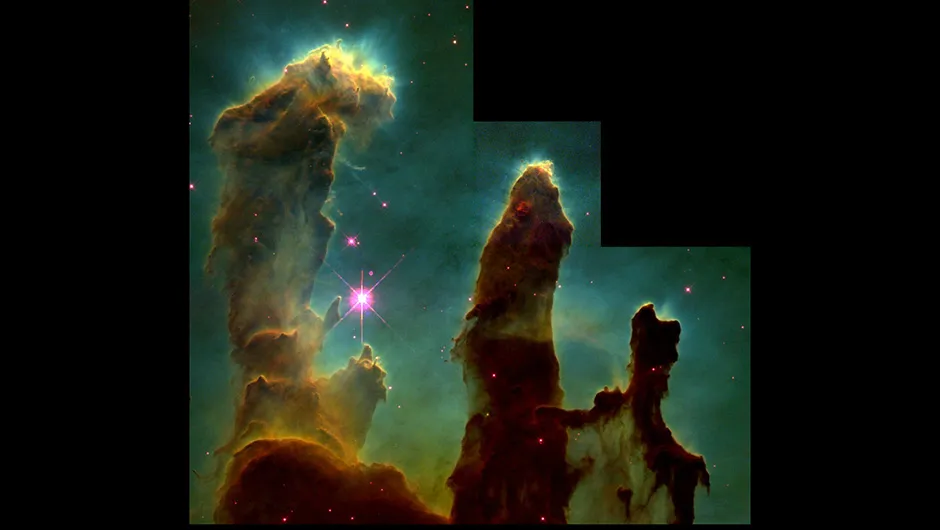
5. 28 January 1986
The loss of NASA’s Shuttle Challenger in a catastrophic explosion less than two minutes after lift-off becomes, sadly, just as memorable as the success of Apollo 11.
4. 24 December 1968
The flight of Apollo 8 around the Moon during Christmas returns colour photographs of our beautiful home planet rising above the lifeless lunar horizon, fragile and lonely against the black background of space.
3. 20 July 1969
Apollo 11’s touchdown on the lunar surface is still one of mankind’s most incredible technical achievements, even though it happened nearly 40 years ago.
Mission commander Neil Armstrong lands the lunar module with just 10 seconds’ worth of fuel remaining, because the guidance systems have brought the machine perilously close to a steep crater.
2. 12 April 1961
Yuri Gagarin circles the Earth for 108 minutes before returning to a hero’s welcome.
He becomes a global superstar, as famous as Elvis or the Beatles. This is the mission that triggers America’s race to the Moon.
1. 4 October 1957
Sergei Korolev’s R-7 missile launches the first man-made satellite, Sputnik 1, into orbit.
Oddly enough, the Soviet authorities don’t think much of the feat and the next day’s press announcement is just a dry technical snippet in Russia’s Pravda newspaper.
The global reaction persuades the Kremlin to boast louder, and invest more substantially in Korolev’s ideas.
